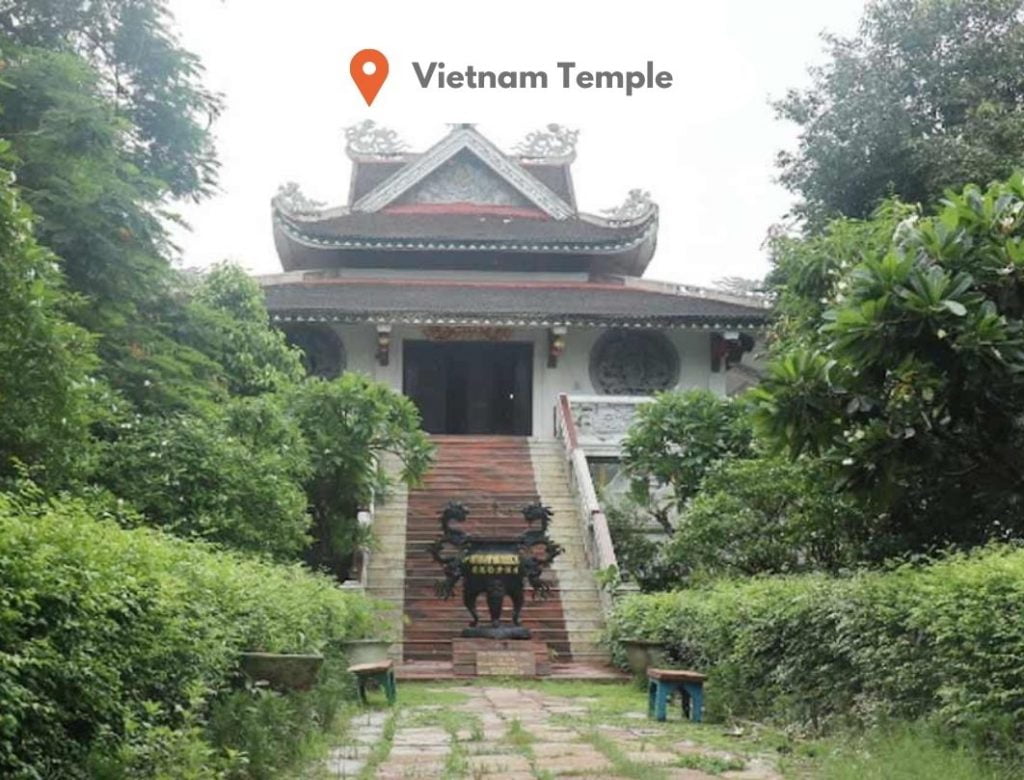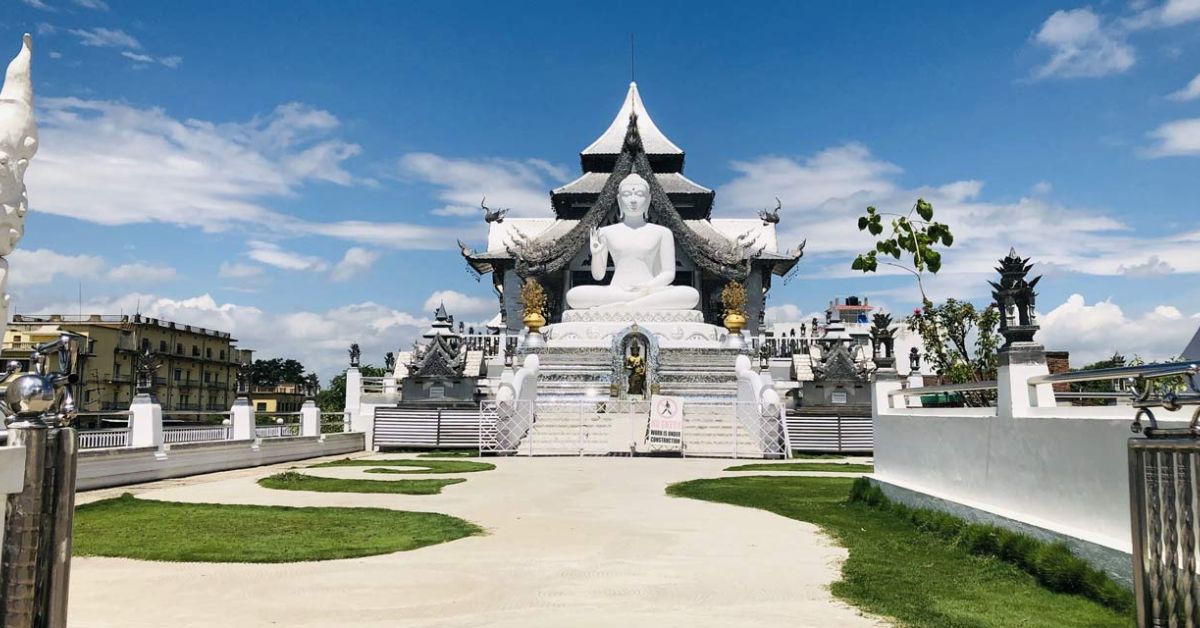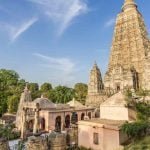Explore the top Buddhist sites in India, from Bodhgaya to Sarnath. Discover sacred pilgrimage destinations rich in history, culture, and spiritual heritage.
India, the birthplace of Buddhism, is home to several sacred sites that trace the footsteps of Lord Gautama Buddha, from his birth to his enlightenment, first sermon, and Mahaparinirvana. Among these holy destinations, Bodhgaya stands as the most revered, for it was here, under the shade of a Bodhi Tree, that Siddhartha Gautama attained Enlightenment and became the Buddha. This event marks the spiritual awakening that laid the foundation for one of the world’s great religions.
In this in-depth guide, we highlight the top Buddhist pilgrimage sites in India, with an emphasis on why Bodhgaya is the crown jewel of them all—making it a must-visit destination for every spiritual seeker, historian, and traveler.
Top Buddhist Sites in India

1. Bodhgaya – The Seat of Enlightenment
Located in Bihar, Bodhgaya is the most important pilgrimage site in Buddhism, attracting millions of devotees from across the globe. It is the place where Prince Siddhartha meditated under the Bodhi Tree and achieved Nirvana, becoming the Buddha.
Key Attractions in Bodhgaya:
- Mahabodhi Temple Complex: A UNESCO World Heritage Site, this sacred structure enshrines the Vajrasana (Diamond Throne) and marks the exact spot of Enlightenment.
- Bodhi Tree: A direct descendant of the original tree under which Buddha meditated.
- Great Buddha Statue: Towering at 80 feet, this is one of the tallest Buddha statues in India.
- International Monasteries: Built by countries like Thailand, Japan, Bhutan, Vietnam, and Tibet, these showcase the global respect and reverence for the site.
- Sujata Kuti: A shrine dedicated to the woman who offered Siddhartha milk rice, ending his period of extreme asceticism.
- Meditation Parks & Retreats: Ideal for those seeking silence, mindfulness, and deep spiritual immersion.
Bodhgaya is not just a historical site—it is a living center of practice, reflection, and global Buddhist unity.
2. Sarnath – Where the Wheel of Dharma Began
After attaining enlightenment in Bodhgaya, Buddha traveled to Sarnath, near Varanasi, where he delivered his first sermon—the Dhammacakkappavattana Sutta, setting the Wheel of Dharma in motion.
Major Highlights:
- Dhamek Stupa: Built to commemorate Buddha’s first sermon.
- Mulagandha Kuti Vihara: A modern temple with beautiful frescoes narrating Buddha’s life.
- Sarnath Archaeological Museum: Home to the famous Ashoka Pillar Lion Capital, India’s national emblem.
Sarnath is second only to Bodhgaya in its spiritual and historical significance.
3. Kushinagar – The Place of Mahaparinirvana
Kushinagar in Uttar Pradesh is the place where Buddha took his last breath and attained Mahaparinirvana. It is revered as the site of liberation from the cycle of birth and death.
Notable Sites:
- Mahaparinirvana Temple: Houses a reclining Buddha statue symbolizing his final moments.
- Ramabhar Stupa: The cremation site of the Buddha.
- International Monasteries: Many countries have built monasteries to honor the Buddha’s passing.
Kushinagar completes the circle of the Buddha’s earthly journey.
4. Lumbini – The Birthplace of Siddhartha Gautama
Though now in present-day Nepal, Lumbini is traditionally included in the Indian Buddhist pilgrimage circuit. It is the site where Queen Maya Devi gave birth to Siddhartha Gautama in 563 BCE.
Spiritual Highlights:
- Maya Devi Temple: Built around the exact birth spot of Buddha.
- Sacred Pond & Bodhi Tree: Associated with the birth rituals.
- Ashokan Pillar: An inscription confirming Emperor Ashoka’s pilgrimage to the site.
Lumbini, while geographically outside India, is a vital part of the spiritual landscape of Buddhism.
5. Rajgir – Home of the First Buddhist Council
Rajgir, located in Bihar, was one of Buddha’s favorite retreats and a major center during his lifetime.
Major Attractions:
- Gridhakuta (Vulture’s Peak): Where Buddha delivered many important sermons.
- Venuvana Monastery: The first monastery donated to Buddha.
- Ajatshatru’s Fort & Cyclopean Walls: Historic landmarks linked to the Magadha kingdom.
- Vishwa Shanti Stupa: A modern peace pagoda built by Japanese monks, accessible via ropeway.
Rajgir was the site of the First Buddhist Council, held soon after Buddha’s death.
6. Nalanda – The Ancient Buddhist Learning Hub
A short distance from Rajgir, Nalanda was the site of the world’s first residential university, flourishing between the 5th and 12th centuries CE.
Key Sites:
- Nalanda University Ruins: A UNESCO World Heritage Site that once hosted over 10,000 students and 2,000 teachers.
- Nalanda Archaeological Museum: A treasure trove of Buddhist art and manuscripts.
- Xuanzang Memorial Hall: Built in honor of the Chinese pilgrim-scholar who studied here.
Nalanda represents the intellectual zenith of ancient Buddhism.
7. Shravasti – A Town of Miracles and Teachings
Located in Uttar Pradesh, Shravasti was one of Buddha’s most-visited cities and the place where he performed many miracles to silence critics.
Highlights:
- Jetavana Monastery: Donated by Anathapindika, it was Buddha’s favored retreat during the rainy season.
- Ananda Bodhi Tree: Planted by Ananda, Buddha’s closest disciple.
- Pakki Kuti and Kachchi Kuti: Ancient stupa remains linked to Buddha’s discourses.
Shravasti stands out as a center of both compassion and miraculous manifestations.
Why Bodhgaya is the Ultimate Buddhist Pilgrimage Destination
Among all these sacred sites, Bodhgaya occupies the highest spiritual pedestal because it is the birthplace of Enlightenment. It is here that the human spirit triumphed over illusion and suffering. Every temple, monastery, and pathway in Bodhgaya resonates with that one sublime moment of awakening under the Bodhi Tree.
Reasons Why Bodhgaya is a Must-Visit:
- Spiritual Energy: The atmosphere is charged with meditative silence and reverence.
- Global Buddhist Presence: A melting pot of diverse traditions—Theravāda, Mahāyāna, and Vajrayāna.
- Cultural Exchange: Engage in teachings, retreats, and rituals from around the world.
- UNESCO Recognition: The Mahabodhi Temple is preserved as a world heritage site.
- Accessibility: Well-connected via air, train, and road, with modern facilities for pilgrims.
Whether you’re a monk, a curious traveler, a history enthusiast, or a seeker on the path, Bodhgaya offers a life-changing experience.
Conclusion
The sacred geography of India tells the complete story of Buddha’s journey—from birth and enlightenment to his final moments. While each site has its own charm and spiritual value, Bodhgaya remains unparalleled. It is not only the beating heart of Buddhism but a living testament to the potential within every human being to transcend suffering and achieve peace.
For every pilgrim and traveler seeking meaning, Bodhgaya is not just a destination—it is a pilgrimage to the soul.





